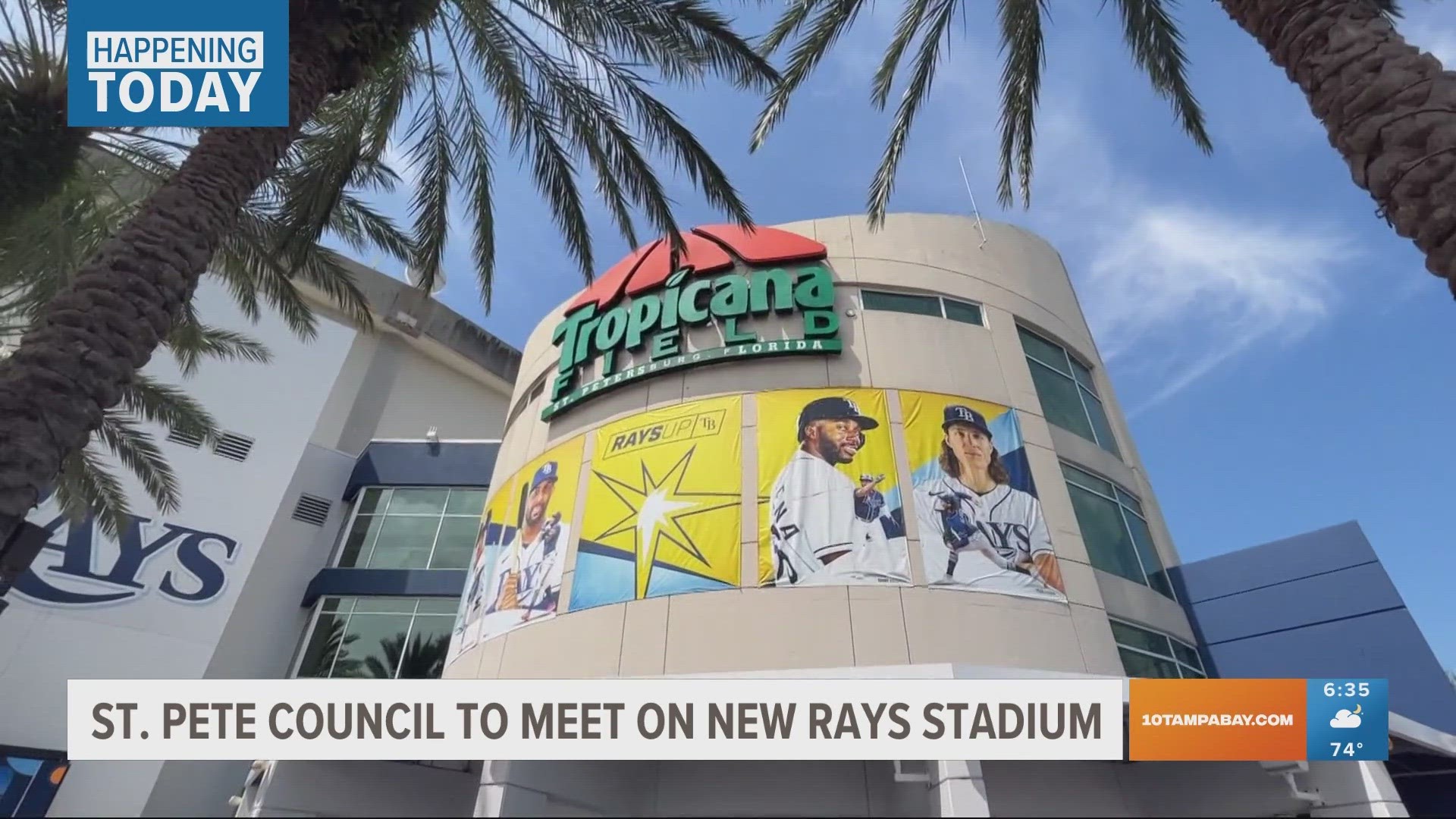ST. PETERSBURG, Fla. — More than a month after the Rays, along with city and county leaders, announced a new $1.3 billion ballpark in downtown St. Petersburg, the terms of the agreement were pitched to city council members — one of two government bodies required to sign off on spending for the project to move forward.
The redevelopment terms for the Historic Gas Plant District cover two areas: the stadium itself and the development of the 65 acres surrounding the stadium site. Both will have a separate terms sheet presented to the council.
The development is still not fully approved and several more meetings will be required. The Rays are pursuing an aggressive timeline seeking city and county approval by March of next year, with hopes of shovels in the ground by winter 2024. They say the project coming to fruition hinges on the timeline.
When it comes to stadium funding, the proposal shows the Rays paying $700 million for the new ballpark, Pinellas County paying $312.6 million and St. Petersburg paying $287.5 million. This will add up to the projected cost of the stadium — about $1.3 billion.
At the meeting Thursday, St. Petersburg Mayor Ken Welch says the project would work "to create and economic, cultural and jobs engine for decades to come in an equitable and sustainable manner."
“The return on investment in terms of tax revenues, housing, small and minority business development is substantial," Welch added.
But concerns over costs, specifically for taxpayers, have been top of mind for many. Public records released earlier this month showed taxpayers could pay more than initially estimated.
The terms specified in a draft summary show the city would spend up to $130 million more, in what it's labeling "infrastructure," for the redevelopment of the historic Gas Plant District surrounding the stadium.
The proposed infrastructure plan included in Thursday's meeting agenda explains the city will contribute that $130 million over the span of several years — $40 million in 2024, $40 million in 2028, $20 million in 2032 and $30 million in 2035.
With the Rays stadium and Gas Plant infrastructure added together, the drafted summary says St. Petersburg's total contribution will be capped at $417.5 million.
"Any cost overruns on the infrastructure will be the responsibility of the Rays/Hines joint venture," the draft summary says.
City council member Richie Floyd voiced concerns over whether there is a positive economic impact for the public to help fund sports stadiums.
"My concern is the public side of things, because otherwise like the study says it represents the transfer of wealth from the public to the private and that’s not what I’m here for," Floyd said.
Other community members have echoed a similar sentiment – Bishop Manuel Sykes an opponent of the deal and pastor at a South St. Pete Church says it again falls short on promises made to those struggling in the area.
"Imagine this minority of billionaires can convince the city and county to come up with money unheard of to build their playpen and sandbox next to it," Sykes said. "I look at who is in charge and city council who do have an opportunity to make this right."
One other new detail coming from Thursday's meeting: under the deal, the Rays would be required to don "St. Petersburg Rays" jerseys for at least one game in the new stadium, pending MLB approval.
Back when the deal was first announced, Pinellas County Commissioner Kathleen Peters said the bed tax would be used to pay for the county's part of the bill. That tax is collected when visitors stay in Pinellas County and brings in about $92 million a year.
But the city has been tight-lipped on how they plan to finance the new ballpark, and with skyrocketing interest rates, some estimate the tab could end up costing taxpayers $1.29 billion.

